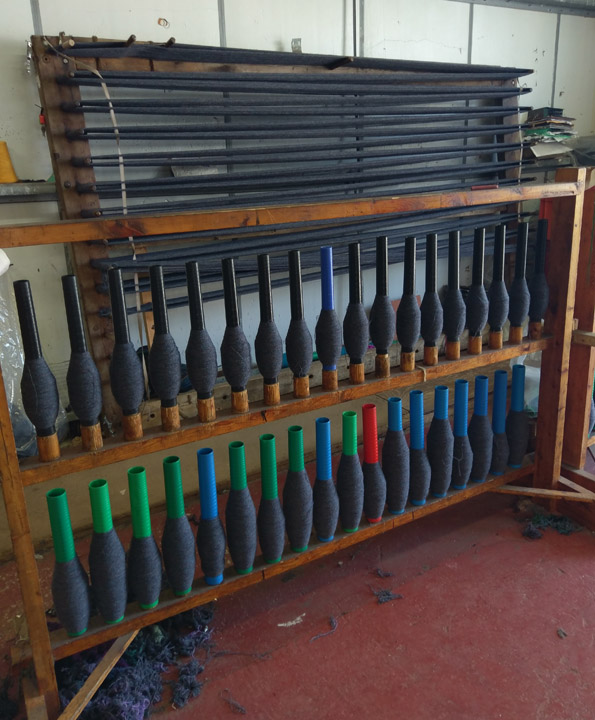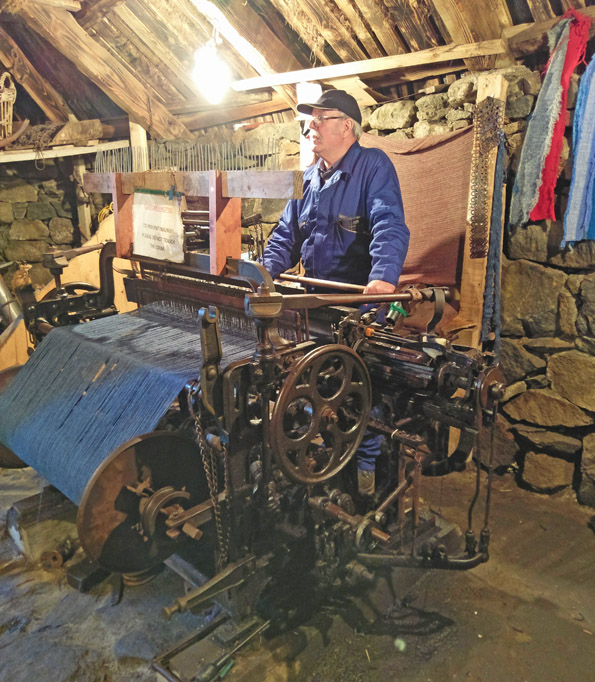After the yarn has been spun and twisted (see my earlier blog: How to make Harris Tweed part 1) it gets wound onto bobbins which will become the warp (vertical threads) and weft (left to right threads).

The Warp threads need to be gathered into a specific colour order because this makes the required pattern of the Harris tweed. It can take a whole day or more, for the weaver to thread up the warp onto the loom.
Once the warp threads are in place, the weaver gets to work on the treadle loom (nothing is mechanised here!) and a new length of Harris tweed begins to emerge.

I met this weaver in Gearrannan blackhouse village on the Isle of Lewis. Gearrannan was preserved after the last villagers moved out into more modern houses nearby, and is now a museum with rentable holiday cottages. The cottages are very dark inside as they have tiny windows, so the weaving is all done with electric light.
I was surprised at the small size of the loom overall. This one is a single width loom (so he can weave only 75cm width cloth and not the usual commercial 150cm width) but it’s capable of producing 35+metres in length. As all the weaving is done in the weavers home or ‘shed’ in their gardens, I suppose it’s handy that the looms aren’t too big!
When the cloth is woven, the tweed goes back to the mill for finishing. More about that another time.

This is one of the Gearrannan blackhouses from the outside. On a beautiful day, like I had in May, it’s a stunning location. I’m not so sure what it would be like in deepest stormy winter!

